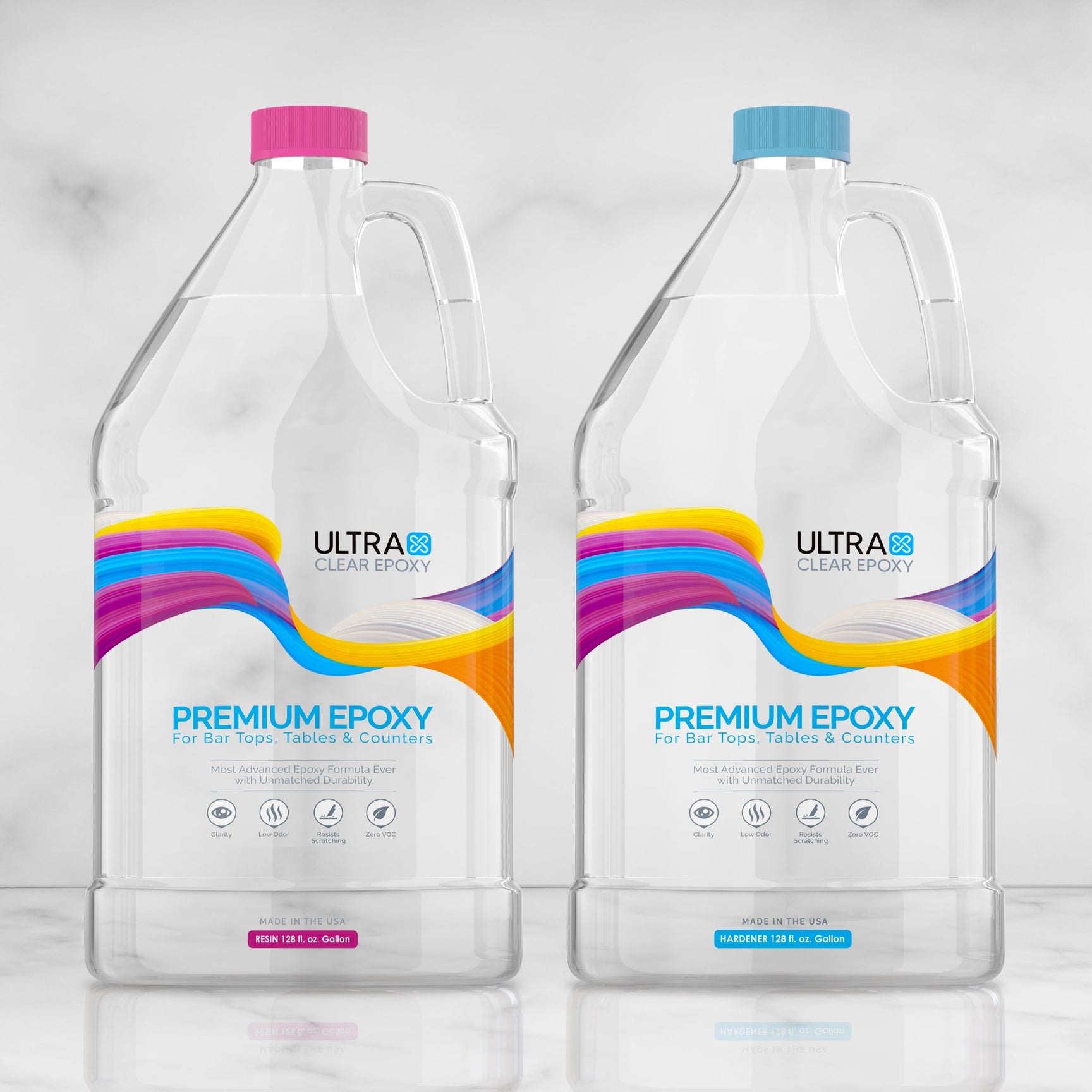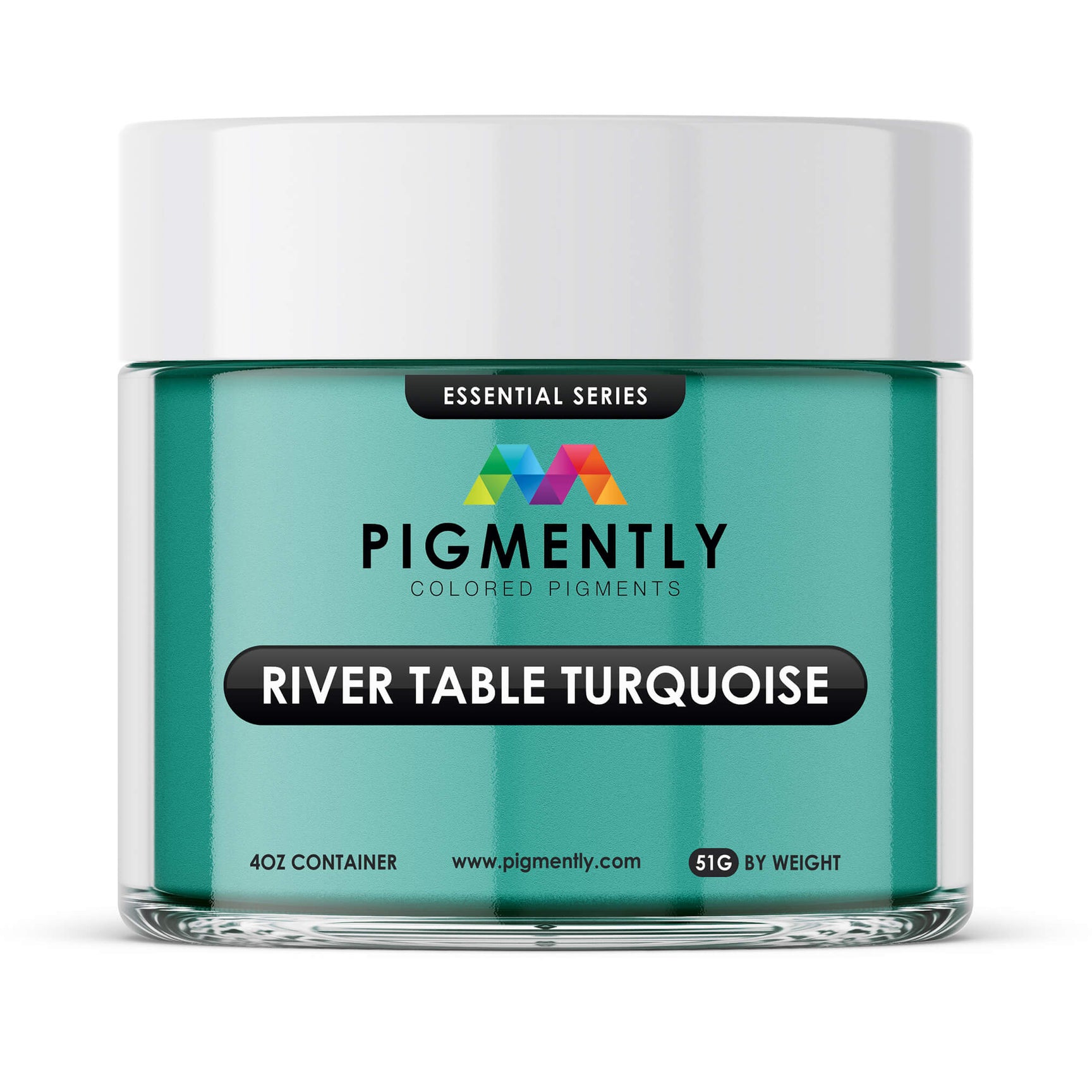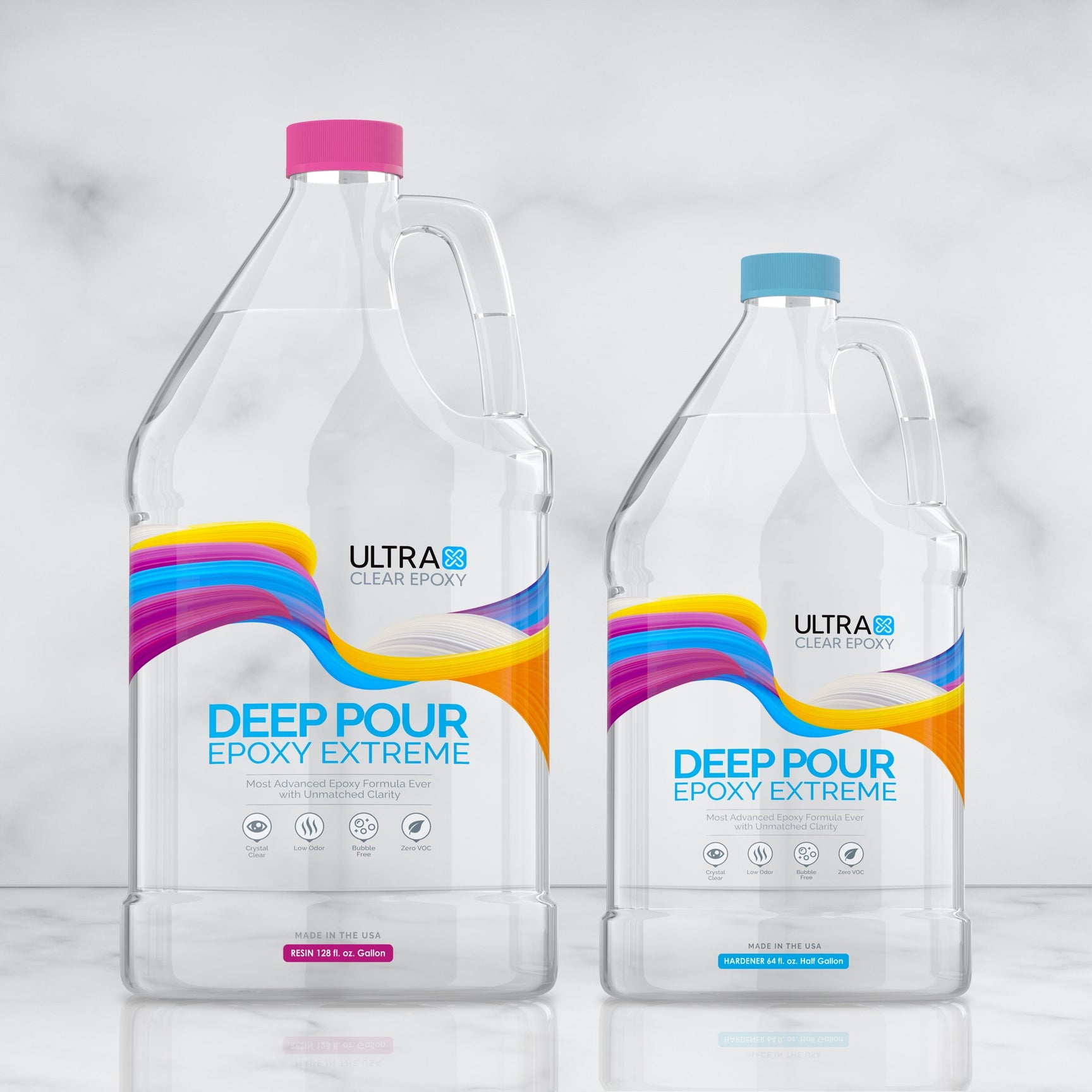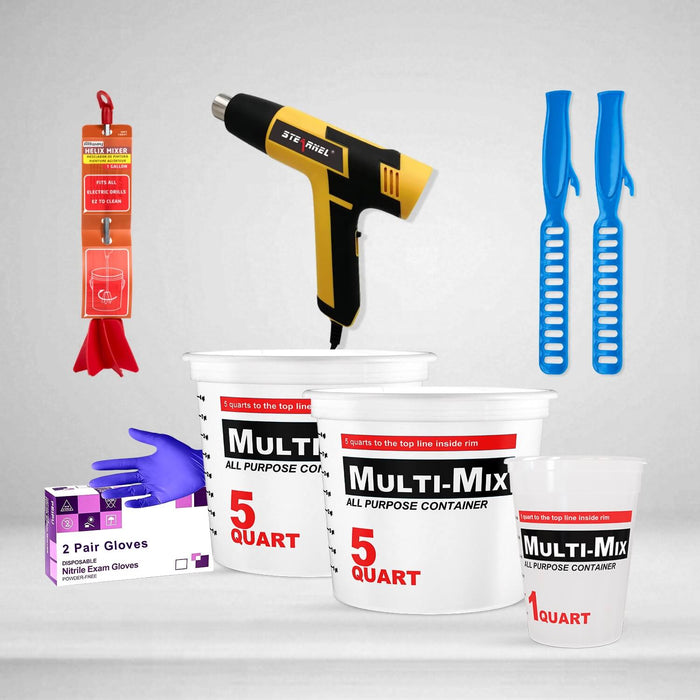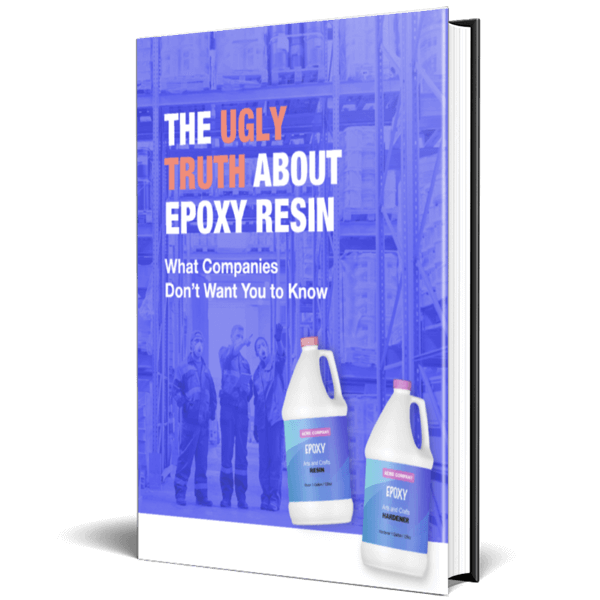At UltraClear Epoxy, our epoxy resins are crystal-clear, for a transparent finish that can withstand heavy use. It's this transparency that many resin users are looking for.
However, UltraClear's epoxy resins are also exceptionally good at blending with suitable colorants, such as epoxy powder pigments and epoxy dyes. Colorants likes these enable resin creators to give their epoxy finish a stunning hue or a colorful multi-toned texture that can change the aesthetic vibes of your project, subtly or overtly.
In this article, we'll cover the different types of epoxy colorants offered in our store, then give some advice on choosing the right colorant for epoxy resin based on your needs.
What are epoxy powder pigments and epoxy dyes?
Epoxy powder pigments and resin dyes both mix seamlessly with epoxy resin, but each type comes from different sources and ingredients.
Epoxy powder pigments
Epoxy powder pigments are often made with mica powder. Mica powder is the finely ground form of mica, a group of silicate minerals with an inherent sheen that shines in the light. When these minerals are turned into a powder, they retain their shining qualities, giving the powder a sparkling effect.
Mica powder is often used for epoxy powder pigments because of how well it meshes with viscous epoxy blends. The powders can be made solely from mica powders or can also include various additives, natural or synthetic, which heighten the intensity of the color or allow the pigment to achieve otherwise impossible shades of colors like blue, purple, and green.
Mica powder for resin is often used for its ability to provide a multi-toned texture to a batch of epoxy resin. When mixed with the resin and poured onto a substrate or into a mold, the colors of the powder will develop into subtle patterns in the resin itself, and the pigments themselves often shift the epoxy resin toward being opaque (i.e., making it no longer see-through).
The colorful patterns created by the pigments can be manipulated to generate stunning effects, such as marbling, swirls, and vibrant streaks. With enough care and effort, more intricate patterns are also possible.
In our store, you'll find a wide array of epoxy powder pigments by Pigmently, a brand of colorants.
Epoxy dyes
Epoxy dyes, on the other hand, are liquid colorants that can be added to epoxy resin batches. These dyes are often highly concentrated, meaning a small amount is all that is needed to produce results. In turn, you can continue to add more to achieve a deeper, darker tone, gradually becoming more opaque.
Epoxy dyes differ from the powder pigments in that they imbue the resin with a consistent, uniform tone that spreads evenly throughout the mixture. Instead of a multi-toned texture, the epoxy will exhibit a single shade of color.
Epoxy dyes are a better choice over powder pigments when you want to keep your epoxy transparent to some degree.
In our store, we have a curated selection of premium epoxy dyes by Pigmently.
How to choose the right colorant for your epoxy project
Knowing how to choose the right colorant for epoxy resin is a matter of understanding what your goals are.
Here are some questions to ask yourself:
- Do you want your epoxy to remain transparent with the color, or should it become opaque?
- Do you want a smooth, single color tone, or does a textured effect appeal more to you?
- Do you want to generate colorful patterns in your epoxy finish?
- Are you interested in mixing different colors to achieve something new, or is the perfect shade already available in our collection?
Let's go over each of these one-by-one.
#1: Do you want a transparent or opaque resin finish?
If you intend to keep your epoxy finish at least somewhat transparent, you should use epoxy dyes. These will allow you to give your epoxy color without making it opaque (though they can be used for that as well).
Also, because epoxy dyes are highly concentrated, you should start with a small amount and gradually add more to achieve the desired look.
#2: Do you prefer a smooth, singular color tone or a textured effect?
If you want your resin to have a single shade of color throughout, then you should use epoxy dyes. These spread evenly and consistently into epoxy resin and don't exhibit the shimmering qualities of epoxy powder pigments.
If you like the idea of a subtle multi-tone textured appearance, go with epoxy powder pigments. These will impart a shimmering look to your epoxy resin that gently sparkles in the light.
#3: Do you want to generate colorful patterns in your epoxy finish?
If you want to create distinct patterns in your epoxy finish, then you should use epoxy powder pigments, as epoxy dyes are not suitable for this.
You can, however, use layering to showcase different colors of epoxy dye in your resin projects. One way to accomplish this is by applying a tinted batch of epoxy and letting it partially cure before adding another batch of a different color.
#4: Is the right tone already in our collection, or do you need to combine some to create the perfect shade?
Though the collections in our store are wide-ranging, it's possible we don't have quite what you're looking for. This is where combining colorants comes in handy.
Either type of colorant for epoxy resin can be mixed with others of its type to create new hues. In such cases, it will be slightly easier to combine epoxy dyes due to their liquid nature than the epoxy powder pigments.

How do you use colorants for epoxy resin?
Using the colorants is actually quite a straightforward process. Here's a quick step-by-step guide.
- Mix up a batch of epoxy resin: Begin by mixing up a resin batch like normal. Just follow the instructions intended for your brand of resin.
- Add the colorant: Partway into the mixing process—or right at the end—mix some colorant into your batch. Start with a small amount and gradually increase it until you achieve your desired tone. Make sure you have enough working time left to pour your epoxy afterward. This will vary based on the resin type.
- Pour/apply your epoxy resin: Once you feel the colorant is adequately blended, pour or apply your epoxy resin. If you're using powder pigments, you can manipulate the epoxy after pouring to create different patterns.
Once you've finished step three, just continue with your epoxy project like normal. The colorants won't affect the other project phases, e.g., curing.
Additional Resources
Here are some additional resources you may find useful:
- Our top 10 epoxy resin FAQs - Ten of the most frequently asked questions, answered in one post.
- Our step-by-step guide to making resin keychains - Learn how to make unique resin keychains in this in-depth guide—a great way to try out different colors!
- Spotlight: Epoxy river tables - A showcase from our Spotlight Series of river tables created by real UltraClear customers! Discover a little of what's possible.
Have questions? Want advice? Contact us!
At UltraClear Epoxy, our goal is to be number one in quality customer service. If you have any questions about choosing the right colorant for epoxy resin, or if you'd simply like assistance with planning an epoxy project, please reach out to us. Our epoxy experts are ready to assist!
You can contact us via phone or email here. During business hours, you can also text chat online with one of our resin specialists by clicking the Help button at the bottom right of your screen.
And if you just want to obtain some high-quality colorants, you can view our collections on the following pages:
And we also have cost-saving colorant bundles, for those who would like to try a variety of different pigments or dyes.





